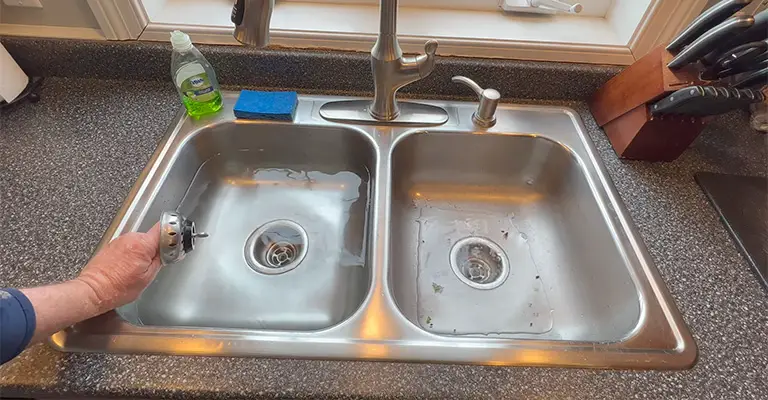A clogged bathroom sink is a common annoyance, but what do you do when the pipes seem clear, yet the bathroom sink isn’t draining? It’s a head-scratcher for sure.
There’s nothing worse than entering the bathroom only to discover dirty water in the sink or a sink that drains slowly.
A plumber might not always be available to solve your drainage problems right away. There are a few DIY techniques that can bail you out of trouble if you know how to use them.
Let’s talk about all that! However, before we proceed, let’s take a look at what is preventing your bathroom sink from draining.
Why Bathroom Sink Won’t Drain But not Clogged
Your bathroom sink is not draining at all is due to a clog, which is usually caused by hair, skin flakes, nails, and soap scum combining inside the pipes.
Moreover, mineral deposits in hard water can prevent water from draining properly.
If you have chemical drain cleaners beyond your natural alternatives, you may wish to try them as well.
Another option is to use a bent wire coat hanger to hold the hair in place and pour half a cup of baking soda with apple cider vinegar, or any vinegar.
You can unclog a kitchen sink by running hot water down the drain.
As for the kitchen sink, you probably thought you’d just have to deal with the slow draining sink caused by the coffee grounds and other food, but here you are in the bathroom with a clogged sink to contend with.
It is also possible for clogged pipes to occur as a result of poor sink maintenance.
It is possible for soap, toothpaste, and other foreign objects to clog the drain if the sink and pipe aren’t cleaned regularly, or enough water isn’t used to flush them down the drain.
The standing water will also become a breeding ground for foul odors and disease-causing microbes.
When the water in the drain pipe has nowhere to go, it exerts pressure on the walls, causing leaks that can be minor or major.
Besides causing damage to the pipe, it can also damage nearby surfaces. Also, it can be a real hassle to clean wastewater off the walls or floors.
As you can see, some clogs can slow down the draining process while others can completely halt it. The best way to prevent severe damage from clogged sink drains is to resolve them early.
What To Do About Bathroom Sink Not Draining But Not Clogged
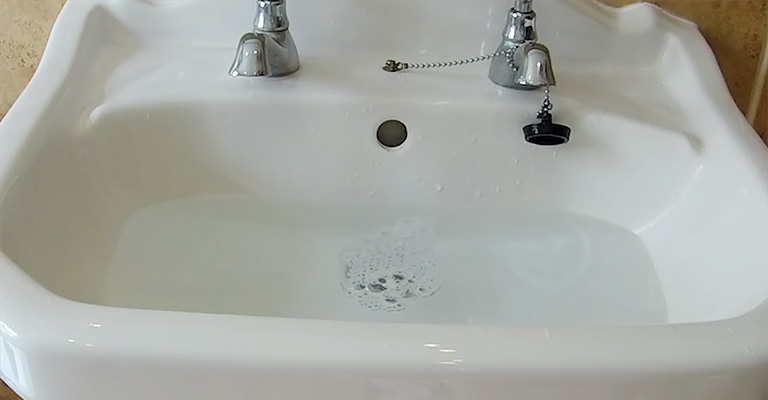
Although the water may seem to be draining straight down the drain, it could be clogged with debris such as candle wax or obstructions in the pipes.
If the water gushes out like a geyser and you don’t see any obstructions in the pipes, then the drain is probably blocked.
1. The Bathroom Sink Stopper
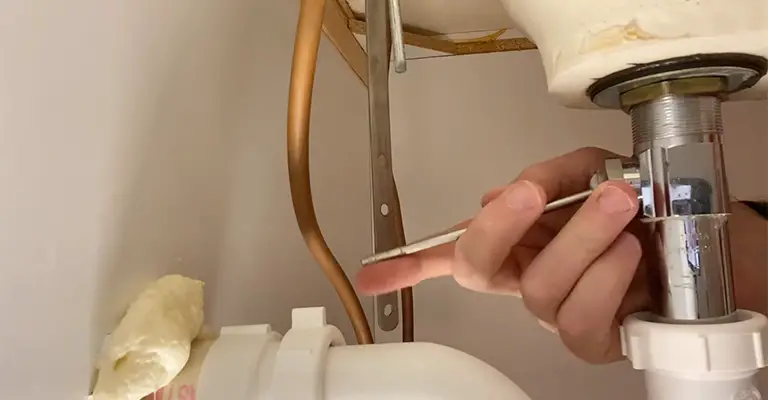
When the bathroom sink is not clogged but still doesn’t drain, this is the most common cause. Everything we do in our sinks comes into contact with the bathroom sink stopper, such as hair, grime, aftershave, and more.
The stopper of the bathroom sink can be blocked quickly by these objects, preventing the sink from draining.
Solution:
Make sure that the drain guard on your sink is removed and that the debris that has collected inside is cleaned out. Make sure the sink stopper is thoroughly rinsed with hot water or a solution of baking soda and vinegar.
If you want to prevent future buildups, you should rinse the sink with hot water every time you use it. If you are working with PVC, don’t use hot water. It would be possible for them to be damaged otherwise.
2. P-Trap Problems
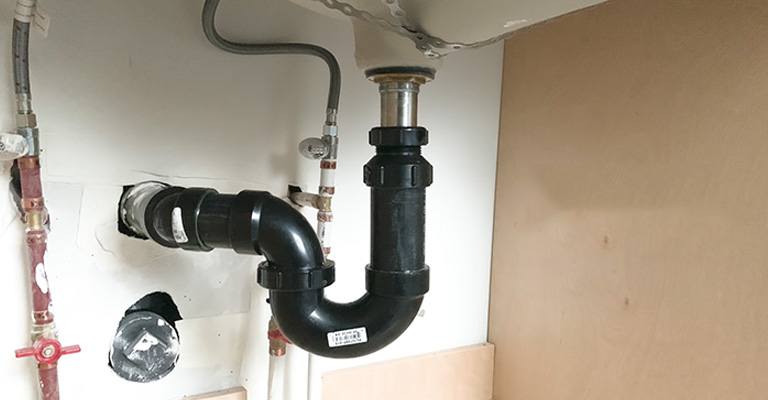
Clogged P-traps are another cause of bathroom sinks that won’t drain even though they are not clogged. In your plumbing system, your P-trap traps debris that is drained from your sink, preventing a deep clog from forming.
It is possible for the P-trap itself to become clogged, resulting in a sink that does not drain despite the fact that its pipes are clear. You can block your P-trap by building up dirt and debris in the bend.
Solution:
Make sure all taps are closed. After that, remove the P-trap. If the nuts aren’t too tight, this shouldn’t be a problem. You would need pliers if they were too tight.
You should remove any debris that is clogging the P-trap after you remove it. The debris can be pushed out using a flexible wire brush. After cleaning the P-trap, rinse the wire brush and repeat the process.
It’s time to put the P-trap back in place after you’re done.
3. Faulty Plumbing
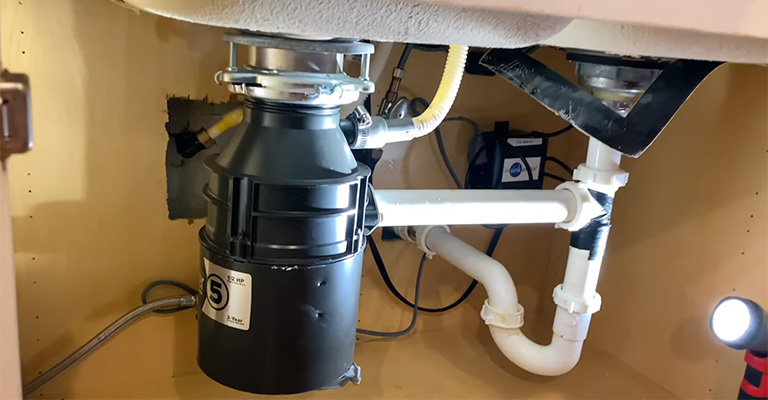
A faulty plumbing system can also cause your bathroom sink to not drain, even though it isn’t clogged. Your plumbing system has many pipes, and many of them are crucial for draining water from your sink.
A damaged or leaking pipe will stop the sink from draining even if the rest of the pipes are in good condition.
The sink that isn’t draining will cause the plumbing system to become clogged with more blockages if the pipe(s) are not immediately repaired.
Solution:
Make sure all of your bathroom sink systems are properly maintained by a plumber. Leaks, blocks, and other problems that could prevent your bathroom sink from draining should be checked by a plumber.
To avoid the problem spreading to other parts of your sink drain, the plumber should repair any problems found.
If your plumbing system has faulty pipes, you can locate them yourself. However, avoid damaging anything. It’s better to hire a professional plumber if you have no idea how to go about it.
Things To Do If Your Bathroom Sink Doesn’t Drain
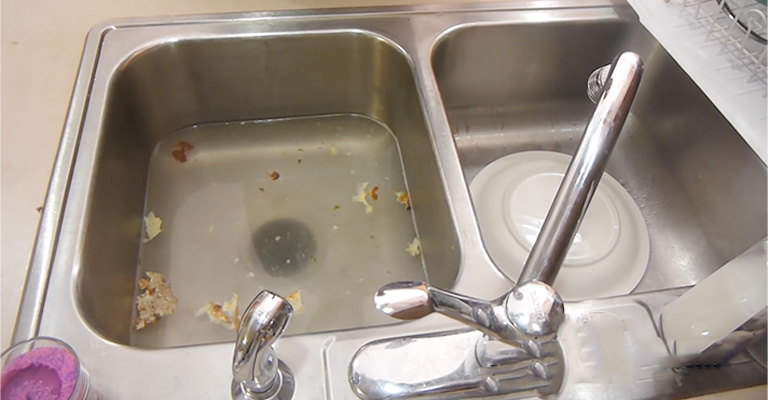
The problem of a clogged bathroom sink can be solved by yourself with a few simple steps. The following are some of them.
Pour Hot Water
Pouring hot water into a clogged bathroom sink is a simple and effective method of unclogging a drain.
To use, simply fill the basin with heated water (not boiling it) and pour some at a time, close to the stopper. In this way, soap scum and undissolved food particles will dissolve.
It will be easier to target the right area if you use a teapot or jug. Make sure you don’t spill it on yourself. You may have to repeat this process several times, depending on the severity of the clogged drains.
The technique, however, is only useful for sinks draining slowly in bathrooms. If your sink is stagnant, adding more water is a disaster waiting to happen!
If you have a stagnant sink, try to remove the drain stopper and clear out any clogged pipes with a coat hanger, nose pliers, or drain snake. You can then pour hot water after allowing some water to drain.
You should also not use this hack for PVC or ceramic drain pipes because they are not made to handle hot water.
Clean The P-Trap
If you have extremely stubborn clogs that just won’t budge, this method may be necessary. Obtain a bucket, some old clothes or paper towels, a soft sponge, and some wrenches before you begin.
To remove the slip nuts from the P-trap (the U-shaped curved pipe below the sink), locate them and remove them using the wrenches.
If you see dirty water or wastewater flowing down the drain, quickly place a bucket underneath to catch it. With a sponge or cloth, clean the P-trap and rinse it with plain water.
An additional step you can take is to use a plumber’s snake to clean the stub (the part that attaches to the wall and the P-trap).
You can pull out hair, paper, or other foreign objects by rotating the handle until you feel resistance. A wire hanger can also be used if you do not have a drain auger.
When you are finished, reassemble everything so you can check the flow and dissolve clogs from your plumbing system. Using harsh chemicals will damage your pipes even further, so we recommend avoiding them.
Use A Plunger
In comparison to the previous two methods, this drain cleaning tool is more manual and messy, but it’s your only option if you have a clog that’s recalcitrant to either.
Wear gloves first. After that, remove a few drops of water from the sink so that the plunger can be placed properly on the plughole.
Make sure there is enough to keep the plughole in place and create a tight seal. Block the overflow with a cloth.
Use a flat-headed plunger to seal the plughole. To clear a clog near the plughole, grasp the handle and move it quickly from one side to the other.
Take out the plunger a few times, then wait a few minutes before resuming. Observe how the water drains down the pipe. Let some hot water run down the drain to finish.
Use Vinegar And Baking Soda Mix
Using baking soda and vinegar from your kitchen cupboard is another great way to fix a slow sink drain if you cannot get results with hot water.
Place one cup of vinegar near the drain stopper after pouring about 1/2 cup soda near it. Make sure the bubbling solution does not run out of the sink by covering the stopper with an old rag.
As a result of the chemical reaction created between baking soda and vinegar, stubborn clogs are broken down.
The water level will go down if a sink is partially or fully stagnant, indicating the reaction is in progress. Replace vinegar with salt if you run out, but this time mix 1/2 cup of each.
Allow the ingredients to do their work for 15 to 20 minutes, and then flush the pipe with hot water. As a preventative measure against clogs, you can perform this procedure once or twice a week.
Infiltrating Tree Roots
Your plumbing system can be affected by tree roots. Your whole plumbing system can be affected by an infiltrated sewer line, including your bathroom sink or kitchen sink.
It can be very costly to remove a tree root from your plumbing system, and you cannot plan where a tree’s roots will grow, so you can’t prevent this type of problem.
If this is the case, you should consult a professional who can explain the best course of action.
Final Words
Even though our tips will help you fix a clog in your bathroom sink or kitchen sink, you can prevent one altogether by doing a few things.
It’s best not to throw any solids into the sink, such as paper or food, otherwise the sink will not drain properly.
The food debris from washing dishes should be disposed of in the garbage disposal. Make sure you place a drain catcher or sink stopper to catch any unwanted substances that might have accidentally ended up in the sink.
Even the slightest clog can be broken down with hot water or baking soda and vinegar when used regularly. You should contact a plumbing professional if you still have a clog.
In order to prevent further damage to your plumbing system, it’s best to address the issue as soon as possible.
As a final note, professional plumbers can perform preventative maintenance in your bathroom to avoid a slow sink drain, which will ultimately save you money in the long run.

